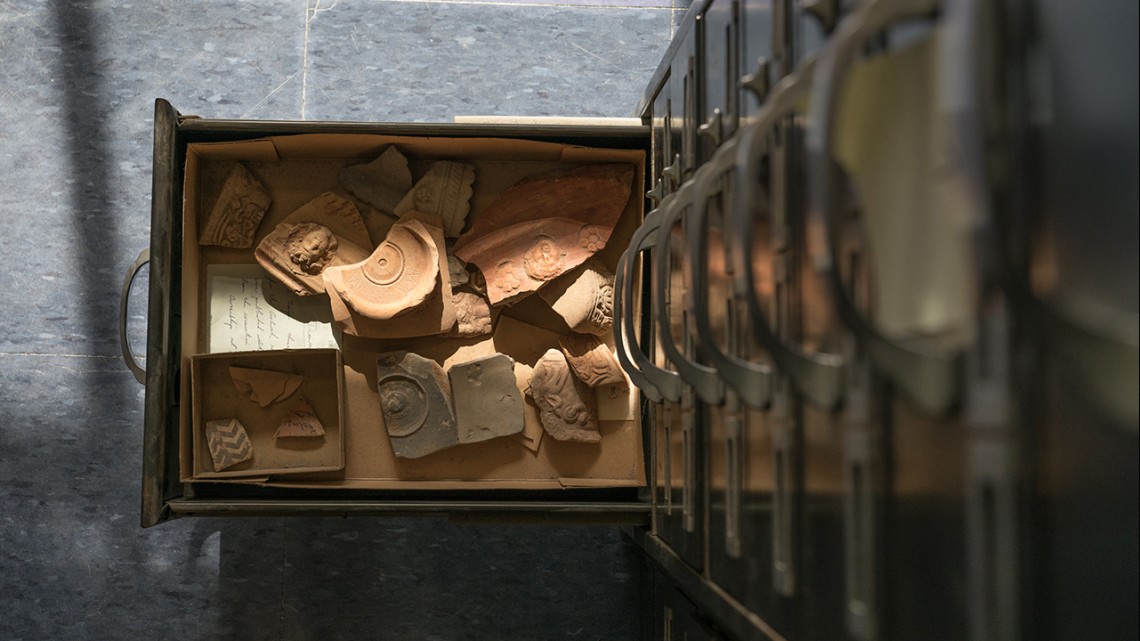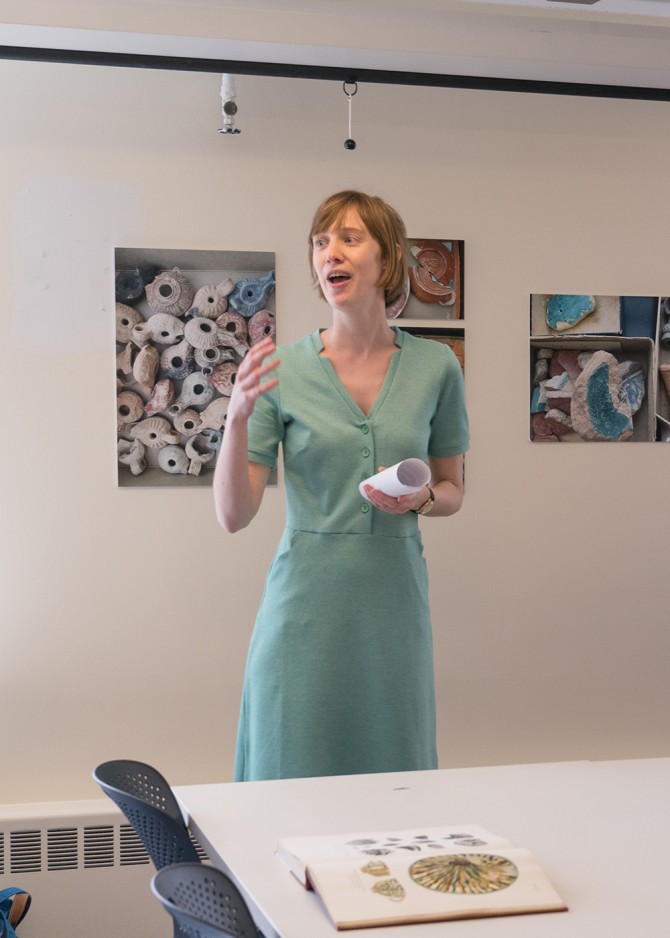
Drawer in the lab with ceramic potsherds.
New Material Culture Lab opens in Goldwin Smith
By Linda B. Glaser
A ceramics collection hidden away in a Cornell basement for decades has a new home in the Material Culture Laboratory in Goldwin Smith Hall.
The lab, run by Astrid Van Oyen, assistant professor of classics, is in the former location of the Temple of Zeus. Instead of soup, the space now offers tantalizing glimpses of past cultures; instead of event posters, the walls are adorned with renderings of multicolored pottery. Shelves display unique, intact ceramics.
“Object-oriented research often gets done abroad, and this lab is a way to bring it to campus,” Van Oyen said at the grand opening celebration May 2. She invited visitors to interact with the potsherds on display, noting that the opportunity to handle, touch and smell them offers a very different experience from how such objects are encountered in museums.
The lab will be used by Van Oyen to conduct research related to the excavations she directs in Tuscany, Italy (the Marzuolo Archaeological Project); by graduate students working on object-based research; and by classics faculty for hands-on teaching, in courses such as Archaeology of the Roman Worldand in new courses in the Department of Classics’ Active Learning Initiative.
The Material Culture Lab is a self-standing entity and will be a close partner to the Landscapes and Objects Lab in McGraw Hall. Both labs operate under the aegis of the Cornell Institute of Archaeology and Material Studies, with complementary collections, equipment and events.
“The Material Culture Lab represents a much-needed expansion of the facilities for object-based research and teaching, which tend to require both space and time,” Van Oyen said. “Archaeology’s deep empirical and conceptual engagement with objects gains new resonance in the current material – which manifests itself at Cornell, for instance, through the Media Studies initiative.”
Many of the ceramics housed in the Material Culture Lab were collected from Antioch, Greece, and other areas in the eastern Mediterranean in the beginning of the 20th century by Fred Waagé, founder of the Fine Arts Department (which became the Department of History of Art and Visual Studies). Van Oyen and her student team, led by Jessica Plant, a graduate student in the field of history of art, are working to rehouse the underutilized collection and make it accessible for teaching and research.
Linda B. Glaser is a writer for the College of Arts and Sciences.
Media Contact
Get Cornell news delivered right to your inbox.
Subscribe
